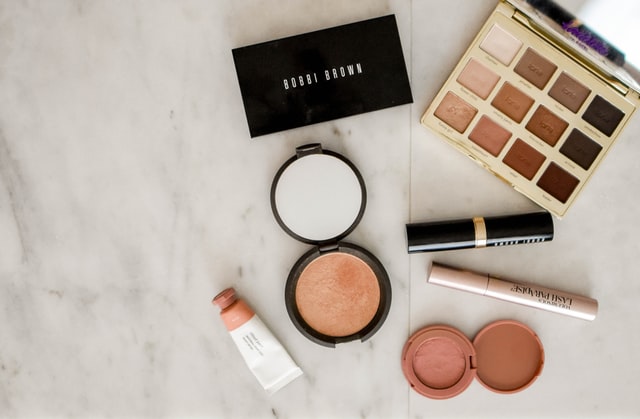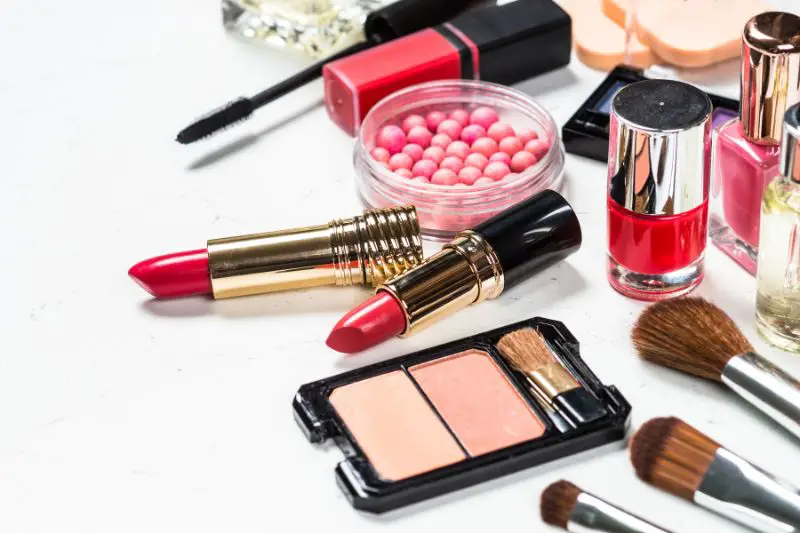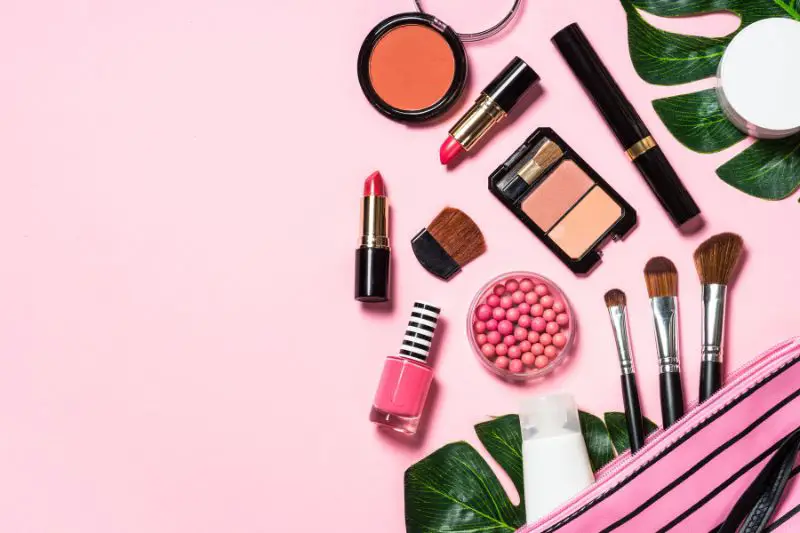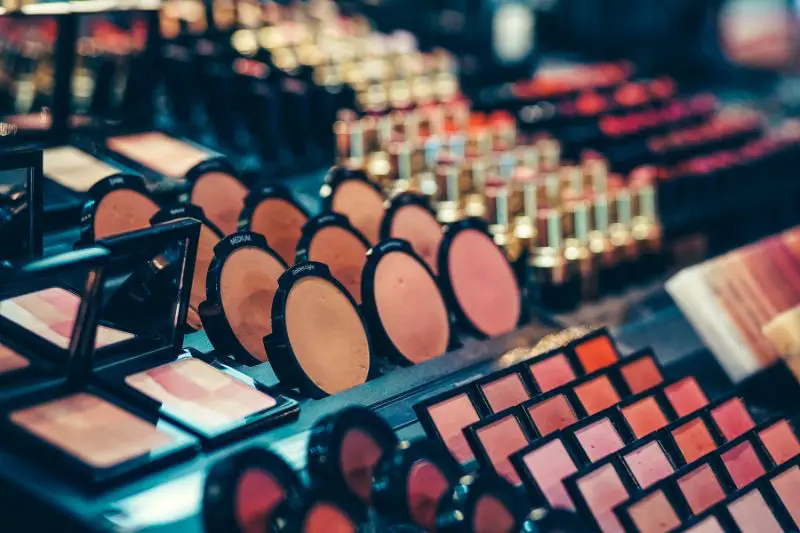
Who really buys cosmetics—and why? Is it just about looking good, or is there something deeper driving consumer choices? The beauty industry is booming, but not every brand succeeds. The secret? Knowing exactly who your products are for.
Understanding your target market isn’t just about demographics; it’s about tapping into emotions, preferences, and lifestyles. Whether you’re launching a luxury skincare line, a budget-friendly makeup brand, or a cruelty-free beauty range, identifying your ideal customers is the key to making your brand stand out.
In this article, we’ll break down the different segments of the cosmetics market, explore what influences buying decisions, and uncover powerful strategies to connect with the right audience. By the end, you’ll have a clear roadmap to reaching the people who will love—and buy—your products. Let’s dive in!
Understanding the Target Market for Cosmetics

The cosmetics industry is vast and diverse, with countless brands competing for consumer attention. To stand out, you need a deep understanding of who your ideal customers are and what drives their purchasing decisions. A well-defined target market allows you to create products, messaging, and marketing strategies that resonate with the right audience.
What Is a Target Market?
A target market is a specific group of consumers most likely to buy your products. This group is defined by key characteristics such as age, gender, income level, and buying behaviors. Instead of marketing to everyone, successful cosmetic brands narrow their focus, ensuring their offerings align with the needs and desires of a well-researched audience.
For example, a premium anti-aging skincare line would target middle-aged and older consumers willing to invest in high-quality ingredients, while a trendy makeup brand might cater to younger audiences influenced by social media trends.
Why Identifying the Right Market Matters
Failing to define your target market can lead to wasted marketing dollars, poor product-market fit, and difficulty building brand loyalty. On the other hand, brands that tailor their strategies to a well-defined audience see higher engagement, stronger sales, and greater customer retention.
Consider Fenty Beauty, which disrupted the industry by addressing the demand for inclusive foundation shades. By identifying an underserved market—people with diverse skin tones—the brand gained a loyal customer base and set a new standard for inclusivity in cosmetics.
Key Factors That Influence the Cosmetics Market
The beauty industry is shaped by several factors that impact consumer choices. Understanding these elements can help you refine your target market strategy.
Consumer Preferences and Trends
Beauty trends evolve rapidly, often influenced by social media, celebrity endorsements, and cultural shifts. Clean beauty, cruelty-free products, and sustainable packaging are growing trends that have reshaped purchasing behaviors. Brands that align with these preferences attract conscious consumers who prioritize ethical and eco-friendly products.
Psychological and Emotional Triggers
Cosmetics are not just about appearance; they also fulfill emotional needs. Consumers buy beauty products to boost confidence, express individuality, or maintain self-care routines. Understanding the emotional connection to beauty helps brands craft compelling messaging that resonates with their audience.
Economic and Regional Factors
Spending power plays a significant role in shaping the target market. Luxury brands appeal to high-income consumers willing to pay for exclusivity and prestige, while drugstore cosmetics cater to budget-conscious shoppers. Additionally, geographic location affects preferences—Asian beauty markets emphasize skincare innovations, while Western markets often focus on bold makeup trends.
Key Demographics of the Cosmetics Market

Demographics play a crucial role in defining your target market. Understanding who your ideal customers are based on age, gender, income, and location helps you create products and marketing strategies that align with their needs. Let’s break down the most important demographic factors in the cosmetics industry.
Age Groups
Consumers of different age groups have unique beauty concerns and preferences. Tailoring products to these distinctions ensures a better market fit.
Teenagers (13-19)
Teenage consumers are often influenced by social media trends, beauty influencers, and peer recommendations. They prioritize affordable, trendy, and easy-to-use products like tinted lip balms, acne-fighting skincare, and bold makeup items. Brands like e.l.f. and NYX appeal to this demographic with budget-friendly, high-quality cosmetics.
Young Adults (20-35)
This group drives much of the beauty industry’s growth. They look for high-performance, trend-driven, and multifunctional products. Many are willing to invest in premium skincare and makeup, especially if the brand aligns with their values, such as clean beauty or sustainability. Glossier and Rare Beauty have successfully captured this market by emphasizing minimalism and authenticity.
Middle-Aged Consumers (36-50)
Consumers in this range often focus on anti-aging solutions, hydration, and long-lasting makeup. They seek high-quality ingredients like retinol, hyaluronic acid, and peptides. Established brands such as Estée Lauder and Lancôme cater to this audience by offering science-backed skincare and sophisticated makeup options.
Seniors (51 and older)
The senior beauty market is growing, with consumers looking for gentle, nourishing, and skin-rejuvenating products. Many prioritize skincare over makeup, seeking solutions for fine lines, age spots, and dryness. Brands like L’Oréal and Olay address this demographic with dermatologist-recommended formulations that enhance mature skin.
Gender and Inclusivity
The beauty industry has traditionally marketed cosmetics to women, but the landscape is shifting toward greater inclusivity.
Women
Women remain the largest consumer group, with varied needs based on age, lifestyle, and personal style. From luxury skincare to drugstore makeup, brands must cater to different preferences, whether it’s high-end exclusivity or affordability and convenience.
Men
The male grooming market is expanding rapidly, with more men investing in skincare, beard care, and even makeup. According to market research, the global men’s skincare market is expected to exceed $18 billion by 2027. Brands like Fenty Skin and Kiehl’s are successfully tapping into this growing segment.
Non-Binary and Gender-Neutral Consumers
A rising demand for gender-inclusive beauty products has led to more brands offering unisex skincare and cosmetics. Companies like Milk Makeup and Morphe market their products as universally accessible, focusing on individuality rather than traditional gender norms.
Income Levels and Purchasing Power
Different income groups have distinct spending habits and brand preferences.
Luxury Beauty Consumers
High-income consumers seek premium, exclusive, and scientifically advanced beauty products. Brands like Chanel, La Mer, and Dior cater to this segment with high-end formulations and prestige packaging.
Mid-Range Shoppers
Mid-tier brands like MAC and Tarte target consumers who want high-quality products at a reasonable price. This group values performance and brand reputation but may not be willing to pay luxury prices.
Budget-Conscious Buyers
Affordable beauty remains a strong market segment, with brands like Maybelline, Wet n Wild, and The Ordinary offering high-quality products at low prices. These consumers prioritize affordability without compromising too much on effectiveness.
Geographic Considerations
Where your customers live also influences their beauty preferences and purchasing behavior.
Urban vs. Rural Markets
Urban consumers often have greater access to luxury and niche beauty brands, while rural markets may favor drugstore or mass-market options. E-commerce bridges this gap, allowing brands to reach customers regardless of location.
Global vs. Local Preferences
Beauty standards and preferences vary across regions. K-Beauty and J-Beauty emphasize skincare-first routines, while Western markets often prioritize bold makeup trends. Understanding cultural beauty expectations helps brands expand effectively into international markets.
Psychographics and Consumer Behavior in the Cosmetics Market

Beyond demographics, understanding the psychographics and behaviors of your target market is essential for crafting effective marketing strategies. Psychographics delve into the attitudes, lifestyles, values, and motivations that influence purchasing decisions.
Lifestyle and Beauty Habits
Consumers incorporate cosmetics into their routines based on their lifestyles and personal preferences. Identifying these habits allows brands to tailor products and marketing messages accordingly.
Beauty Enthusiasts
These consumers view cosmetics as an essential part of self-expression and identity. They actively follow beauty trends, experiment with new products, and engage with beauty influencers. High-engagement brands like Huda Beauty and Fenty Beauty thrive in this segment by launching innovative products and leveraging influencer collaborations.
Minimalists
Minimalist consumers prefer simple, multipurpose products that streamline their beauty routines. They favor skincare-first brands, lightweight makeup, and neutral tones. Glossier and Ilia cater to this audience by offering natural-looking cosmetics and skincare hybrids.
Professional and Busy Consumers
Working professionals and parents seek long-wearing, easy-to-apply products that fit into their busy schedules. Brands that emphasize efficiency—such as IT Cosmetics with their multi-benefit CC creams—resonate with this group by offering high-performance solutions with minimal effort.
Wellness and Eco-Conscious Consumers
This segment prioritizes natural, organic, cruelty-free, and sustainable beauty products. They are drawn to brands that emphasize ethical sourcing, environmentally friendly packaging, and transparency. Brands like Herbivore and RMS Beauty appeal to this audience with clean ingredients and eco-friendly practices.
Motivations and Emotional Drivers
Consumers don’t just buy cosmetics for their functional benefits—they purchase based on emotions, identity, and aspirations.
Confidence and Self-Expression
Many consumers use beauty products to enhance their confidence and showcase their individuality. Bold makeup lines, vibrant lip colors, and artistic eyeshadow palettes appeal to those who view beauty as a form of self-expression. Urban Decay, for instance, built its brand around bold, rebellious aesthetics that empower consumers to stand out.
Self-Care and Well-Being
Skincare and cosmetics are deeply tied to self-care rituals. Consumers seeking relaxation and self-pampering gravitate toward luxurious textures, soothing ingredients, and spa-like experiences. Brands like Lush and Tatcha tap into this emotional connection by offering indulgent, sensorial beauty products.
Social Influence and Aspirations
Peer recommendations, influencer endorsements, and celebrity collaborations play a significant role in purchasing decisions. Consumers often aspire to achieve the flawless looks showcased by beauty influencers. Charlotte Tilbury and Kylie Cosmetics successfully leverage this by associating their products with aspirational lifestyles.
Purchasing Behavior and Decision-Making
Understanding how consumers research and buy cosmetics helps brands optimize their sales strategies.
Online vs. In-Store Shopping
With the rise of e-commerce, many consumers prefer online shopping for convenience and access to reviews. However, others still favor in-store experiences for product testing and personalized consultations. Sephora’s hybrid model—offering both digital beauty tools and in-store experiences—caters to both shopping preferences.
Brand Loyalty vs. Experimentation
Some consumers remain loyal to a few trusted brands, while others love to experiment with new products. Subscription boxes like Birchbox and Ipsy target experimental buyers by offering curated samples, allowing them to explore new brands without commitment.
Price Sensitivity and Value Perception
Consumers perceive value differently—some prioritize affordability, while others equate higher prices with better quality. Drugstore brands like NYX and ColourPop attract budget-conscious shoppers, whereas luxury brands like La Prairie cater to those willing to invest in premium formulations.
Emerging Trends in the Cosmetics Market

The cosmetics industry is constantly evolving, shaped by shifting consumer preferences, technological advancements, and societal influences. Understanding these trends is crucial for brands looking to stay competitive and meet the demands of their target market.
Clean and Sustainable Beauty
Consumers are increasingly prioritizing sustainability and transparency in their beauty products. This trend has led to a rise in brands that focus on eco-friendly formulations, ethical sourcing, and minimal waste packaging.
Demand for Natural and Organic Ingredients
Shoppers are becoming more conscious of the ingredients in their cosmetics, favoring plant-based, non-toxic, and cruelty-free formulations. Brands like Biossance and Tata Harper have gained popularity by emphasizing clean beauty standards without compromising performance.
Refillable and Zero-Waste Packaging
Sustainability efforts have extended beyond ingredients to packaging. Companies like Kjaer Weis and Fenty Beauty offer refillable compacts and lipstick cases, reducing plastic waste while maintaining luxury appeal.
Ethical and Transparent Sourcing
Consumers want assurance that their beauty products are ethically produced. Brands that provide clear information about sourcing, labor practices, and environmental impact—such as The Body Shop—build trust and long-term loyalty.
Personalization and Custom Beauty
The demand for personalized cosmetics has surged, with brands leveraging technology to create tailored beauty solutions.
AI and Virtual Try-Ons
Many consumers hesitate to buy cosmetics online due to uncertainty about shades and textures. Augmented reality (AR) and AI-driven tools, such as L’Oréal’s virtual try-on feature, allow users to test products digitally, improving confidence in online purchases.
Custom Formulations
Skincare and makeup brands are developing personalized products based on individual needs. Companies like Function of Beauty and Skinsei use AI quizzes to recommend tailored formulations, catering to specific skin concerns and preferences.
Bespoke Makeup Shades
Some brands, such as Bite Beauty’s Lip Lab, offer in-store customization where customers can create their own lipstick shades, enhancing the shopping experience and fostering brand loyalty.
Inclusivity and Diversity in Beauty
Consumers expect brands to be more inclusive, catering to a wider range of skin tones, gender identities, and cultural beauty preferences.
Expansive Shade Ranges
Fenty Beauty revolutionized the industry by launching 40 foundation shades, setting a new standard for inclusivity. Other brands, including Estée Lauder and Maybelline, have followed suit by expanding their complexion product offerings.
Gender-Neutral Beauty
The beauty industry is breaking traditional gender norms, with more brands embracing gender-neutral marketing and packaging. Companies like Milk Makeup and Jecca Blac cater to all consumers, reinforcing the idea that beauty is for everyone.
Cultural Representation
Consumers seek products that reflect their unique beauty needs. Brands that incorporate global beauty traditions—such as J-beauty and K-beauty innovations—continue to gain traction worldwide.
Tech-Driven and Smart Beauty
Advancements in technology are transforming the way consumers interact with cosmetics, leading to smarter, data-driven beauty solutions.
AI-Powered Skincare Analysis
AI-driven apps analyze skin conditions and recommend personalized skincare routines. Brands like Neutrogena and Olay have introduced diagnostic tools that assess hydration levels, fine lines, and other skin concerns using smartphone cameras.
Smart Beauty Devices
The rise of beauty-tech has introduced devices that enhance skincare routines. Foreo’s smart facial cleansing brushes and LED therapy masks from brands like Dr. Dennis Gross Skincare provide high-tech skincare solutions at home.
Blockchain for Product Authenticity
With counterfeit cosmetics posing risks to consumers, some brands are integrating blockchain technology to verify product authenticity and trace supply chain transparency.
The Rise of Minimalist and Multi-Use Products
Consumers are embracing minimalism, opting for multi-functional products that simplify their beauty routines.
Hybrid Skincare and Makeup
BB creams, tinted moisturizers, and serum-infused foundations are gaining popularity. Brands like IT Cosmetics and Ilia offer products that combine skincare benefits with makeup coverage, streamlining daily routines.
Multi-Purpose Beauty Sticks
Products that serve multiple functions—such as lip-and-cheek tints or all-over highlighters—are appealing to consumers looking for versatility. Nudestix and Milk Makeup have capitalized on this trend with their easy-to-use multi-use sticks.
Capsule Beauty Collections
Instead of overwhelming consumers with extensive product lines, some brands are curating capsule collections with essential, high-quality items. Merit Beauty, for instance, focuses on a small yet effective range of beauty products designed for everyday wear.
As these trends continue to shape the cosmetics industry, businesses that adapt and innovate will be best positioned to capture consumer interest and drive long-term success. In the next section, we’ll explore strategies for effectively reaching and engaging your ideal cosmetics market.
How to Identify and Reach Your Target Market for Cosmetics

Understanding your target market is crucial for the success of any cosmetics brand. By identifying the right audience and implementing effective marketing strategies, you can build brand loyalty and drive sales. Here’s how to define and reach your ideal customer base.
Defining Your Target Audience
Before crafting a marketing strategy, you need a clear understanding of who your ideal customers are.
Demographics and Psychographics
Analyzing both demographic and psychographic data provides a comprehensive view of your target market.
- Demographics: Age, gender, income level, education, and location all influence purchasing behavior. For example, Gen Z shoppers often prefer bold, expressive makeup, while older consumers may seek anti-aging skincare solutions.
- Psychographics: This includes values, lifestyle, and buying motivations. Some consumers prioritize sustainability, while others focus on luxury and exclusivity.
Consumer Needs and Preferences
Identifying what your customers seek in cosmetics helps refine your product offerings.
- Performance-focused consumers look for long-wear, waterproof, or sweat-resistant formulas.
- Health-conscious buyers prefer clean beauty products with natural ingredients.
- Trend-followers are drawn to influencer collaborations and limited-edition collections.
By aligning your brand with these preferences, you can create targeted messaging that resonates with your audience.
Leveraging Digital Marketing Strategies
Once you’ve defined your target market, the next step is to engage them effectively through online platforms.
Social Media Marketing
Social media is a powerful tool for beauty brands, as visual content drives high engagement.
- Instagram and TikTok: Short-form videos showcasing product application, transformations, and tutorials perform well. Brands like Fenty Beauty and Rare Beauty thrive on these platforms by leveraging influencer partnerships and user-generated content.
- Pinterest: Many beauty enthusiasts use Pinterest for inspiration, making it a great platform for showcasing aesthetic product shots and makeup looks.
- YouTube: Long-form tutorials and reviews help build trust with potential customers. Skincare brands, in particular, benefit from in-depth product breakdowns and before-and-after testimonials.
Influencer Collaborations
Partnering with influencers who align with your brand can increase credibility and expand reach.
- Micro-influencers (10k–100k followers) often have highly engaged audiences and can drive targeted conversions.
- Celebrity endorsements can provide widespread visibility, though they require a larger investment.
- User-generated content (UGC) builds authenticity, as potential buyers trust peer recommendations over traditional advertising.
Search Engine Optimization (SEO) for Beauty Brands
Optimizing your website for search engines helps customers discover your brand organically.
- Keyword optimization: Use search terms like “best foundation for oily skin” or “vegan lipstick brands” to rank higher on Google.
- Content marketing: Create blog posts, tutorials, and guides to educate consumers and establish authority.
- Local SEO: If you have a physical store, optimize for location-based searches, such as “best beauty store near me.”
Enhancing the Customer Experience
Beyond marketing, the way customers interact with your brand influences loyalty and repeat purchases.
Personalized Shopping Experiences
Consumers appreciate tailored recommendations, whether online or in-store.
- AI-driven quizzes on websites can suggest personalized skincare routines or foundation shades.
- In-store consultations with beauty experts enhance the shopping experience and encourage product discovery.
Subscription Models and Loyalty Programs
Encouraging long-term engagement can boost customer retention.
- Beauty subscription boxes like Ipsy and Birchbox introduce customers to new products while driving brand awareness.
- Loyalty programs offering exclusive discounts, early access to launches, or free samples incentivize repeat purchases.
Omnichannel Shopping Experience
Consumers expect a seamless shopping journey across multiple platforms.
- Click-and-collect options bridge the gap between online and offline shopping.
- Live shopping events on social media allow customers to ask questions and purchase in real-time.
- Chatbots and virtual assistants provide instant product recommendations and customer support.
Identifying and reaching the right target market requires a strategic approach, combining audience insights, digital marketing tactics, and exceptional customer experiences. In the next section, we’ll explore how to refine your product offerings to align with market demand.
Refining Your Product Offerings to Match Market Demand

Creating a successful cosmetics brand requires more than just high-quality products. Your offerings must align with consumer needs, preferences, and emerging industry trends. Here’s how to refine your product line to meet market demand effectively.
Understanding Consumer Trends
Consumer preferences in the beauty industry are constantly evolving. Staying ahead of these trends ensures your products remain relevant.
Clean and Sustainable Beauty
More consumers are prioritizing eco-friendly and non-toxic cosmetics. Brands that offer vegan, cruelty-free, and sustainably packaged products gain a competitive edge.
- According to a 2023 Nielsen report, 74% of consumers are willing to pay more for sustainable products.
- Major brands like Lush and The Body Shop have embraced plastic-free packaging and ethical sourcing.
Inclusive and Customizable Products
Beauty is no longer one-size-fits-all. Consumers expect inclusivity in shade ranges, formulations, and application methods.
- Fenty Beauty disrupted the industry with its 40-shade foundation launch, setting a new standard for diversity.
- Custom-blended foundations, personalized skincare solutions, and adaptable products (like multi-use sticks) are growing in demand.
Hybrid and Multi-Functional Cosmetics
Consumers are looking for efficiency in their beauty routines. Products that combine skincare benefits with makeup features are gaining popularity.
- Tinted moisturizers with SPF, serum-infused foundations, and skincare-powered primers cater to busy professionals and minimalists.
- The global hybrid beauty market is expected to grow by 8.5% annually, reflecting the demand for multifunctional products.
Product Development Strategies
Once you’ve identified key trends, the next step is to refine your product line accordingly.
Conducting Market Research
Gathering direct feedback from your audience helps ensure product-market fit.
- Use surveys, focus groups, and social media polls to understand what consumers want.
- Analyze customer reviews to identify pain points and areas for improvement.
Testing and Iterating
Launching a product without proper testing can lead to failure. A strategic approach to development ensures success.
- Start with small-batch production to test formulations and gauge demand.
- Work with beta testers and influencers to refine the product before a full-scale launch.
- Monitor sales performance and adjust formulations or packaging based on consumer feedback.
Aligning with Brand Identity
Your product offerings should reinforce your brand’s values and mission.
- If your brand is luxury-focused, emphasize premium ingredients and elegant packaging.
- If your brand targets budget-conscious consumers, highlight affordability and value-driven benefits.
Positioning Your Products for Maximum Impact
Beyond formulation, effective product positioning determines success in a competitive market.
Pricing Strategy
Your pricing should reflect both product quality and consumer expectations.
- Prestige brands can justify higher prices with exclusive ingredients and premium packaging.
- Mass-market brands should emphasize affordability while maintaining quality.
- Mid-range brands can leverage accessibility and perceived luxury to appeal to a broad audience.
Packaging and Branding
First impressions matter. Visually appealing and functional packaging enhances customer experience.
- Minimalist designs with clean typography attract modern consumers.
- Eco-friendly packaging appeals to sustainability-conscious buyers.
- Interactive packaging, such as QR codes for tutorials or ingredient breakdowns, adds value.
Strategic Product Launches
A well-planned launch strategy builds anticipation and boosts sales.
- Pre-launch marketing campaigns through influencer teasers and behind-the-scenes content generate excitement.
- Exclusive early access to loyal customers or subscribers creates a sense of exclusivity.
- Seasonal or limited-edition releases drive urgency and increase demand.
Conclusion
Understanding and targeting the right market for cosmetics is essential for business success. By identifying your ideal consumers, segmenting them effectively, and refining your product offerings to align with their needs, you can position your brand for long-term growth.
Consumer trends are constantly evolving, and staying ahead requires continuous research, adaptability, and strategic marketing. Whether it’s catering to sustainability-conscious buyers, embracing inclusivity, or offering innovative hybrid products, brands that listen to their audience and deliver value will thrive in the competitive beauty industry.
To ensure sustained success, regularly analyze market data, track consumer behavior, and refine your strategies based on real-world insights. With a well-defined target market and a customer-centric approach, your cosmetics brand can build strong connections, drive sales, and establish itself as a trusted name in the industry.
